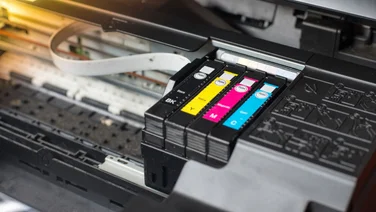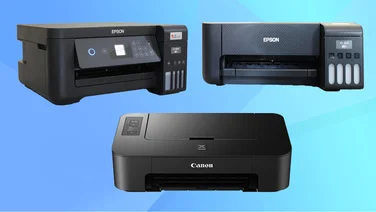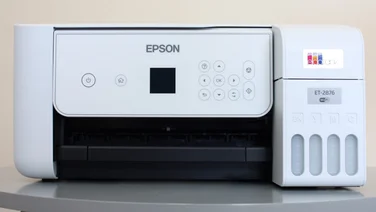To help us provide you with free impartial advice, we may earn a commission if you buy through links on our site. Learn more













Not so long ago, the Fujifilm SL1000 would have been described as a bridge camera – a halfway house for people who want an enthusiast-oriented camera but can’t stretch to the cost of an SLR. These days the options are much more varied and complex, with ultra-zoom cameras (as they’re now more commonly known), premium compact cameras, compact system cameras (CSCs) and SLRs all overlapping each other in the £300-£400 price bracket.

No other type of camera comes close to matching the SL1000’s 50x zoom range, though. In fact, this is the joint-biggest zoom ever to grace a digital camera, matched by the Sony HX300 and Canon PowerShot SX50 HS.
It’s well specified in other respects, too. There’s an unusually sharp 920,000-dot electronic viewfinder, an equally sharp 3in articulated screen and an eye-level sensor to switch between the two screens automatically. A hotshoe for an external flashgun sits on top beside a stereo microphone. Continuous mode runs at 10fps, and it can capture in raw mode and record 1080p videos at 60fps.
The controls are relatively conventional, with a couple of single-function buttons but no lens rings for zoom and focus that we admired so much on the Fujifilm Finepix HS30EXR. There are two levers for adjusting the zoom – one on the lens barrel and another encircling the shutter release button. Both work fine but they’re not as quick to adjust as a mechanical lens ring.

The menu system could be better. There’s a customisable function button set to ISO speed by default, but other key functions such as autofocus area and white balance are only available via the main menu. This menu takes about a quarter of a second to respond to button pushes. That may not sound like much but it mounts up when you’re trying to navigate quickly through the list of functions. We also found that the wheel on the back of the camera was too low profile and not sufficiently textured to get a decent grip on it.
Ultra-zoom cameras are ideally suited to sports and wildlife photography, and fast performance is vital to capturing these moving subjects. The SL1000 was a little slow to switch on, taking 2.7 seconds to its first shot, but subsequent shots were reasonably quick at 1.1 seconds apart. Continuous shooting was at a choice of 10, 5 or 3fps, slowing to around 1.3fps after nine frames in our tests. There’s no option to update autofocus between these shots, though. The screen showed captured frames rather than a live view, making it virtually impossible to track moving subjects. Raw-format photos were captured every 1.3 seconds, with occasional five-second breaks. Raw and continuous modes can’t be selected at the same time.

We were looking forward to testing the SL1000’s telephoto lens on the local bird population, but capturing sharp photos at the 1200mm (equivalent) longest focal length was trickier than we’d hoped. It was difficult to compose shots, as the slightest movement in the camera sent subjects careering out of the frame. We had the same problem with the Canon SX50 HS, but it includes a button for momentarily zooming out to help locate the subject again.
A bigger problem was that telephoto shots were often badly lacking in detail. It was obvious just from looking at them on the 3in screen, let alone when we uploaded them to a PC. There seems to be a number of causes. The 16-megapixel sensor is fairly noisy, so even well-lit shots at ISO 100 exhibited heavy noise reduction that smeared fine details. This became much worse as the ISO speed increased, which was often necessary for telephoto shots, where fast shutter (and thus, ISO) speeds are used to avoid camera shake. Focus from the lens also deteriorated badly at the full zoom extension, and blooming and chromatic aberrations were visible too.

This is one of the best bird photos we managed to capture. There’s a distinct lack of subtle texture, though, and focus is pretty hazy

In fact, shooting the same scene at a more modest 580mm focal length makes our subject smaller but not significantly less detailed

This photo is more representative of the bulk of our telephoto test shots

The camera has pushed the ISO speed up to 320 here – syrupy noise reduction is worse, and there are some colour banding issues too towards the edge of the frame
Details were a little vague at medium and wide-angle focal lengths too, with noise reduction suppressing subtler textures to give photos a processed appearance. This was only visible on close inspection, and Fujifilm’s flattering colour processing ensured great results after resizing photos to fit a 1080p monitor. Rival cameras stand up better to scrutiny, though. Low-light shots suffered a similar fate to telephoto shots, with noise reduction taking a heavy toll on details

High-contrast details are pixel-sharp here, but there’s not much texture on the tree trunk, and the thin branches look to us like they’ve been subjected to heavy digital sharpening

Low-light shots are OK for online sharing, but it’s a disappointing result from a £300 camera
We were much more impressed with the video mode, where the 2-megapixel resolution of 1080p video was much more forgiving to the lens’ limited sharpness. The optical stabilisation managed to keep clips reasonably steady at the long end of the zoom, and there was no sign of the blocky aliasing artefacts that we’ve seen on other Fujifilm cameras’ video modes recently. Autofocus was smooth and silent, but whirs from the zoom motor were picked up by the microphone. The 60fps frame rate gave smooth motion but it requires a fast PC for smooth playback. It’s odd that there’s no 30fps or 25fps 1080p option too.
The SL1000 has a lot going for it, but it’s frustrating that image quality falls apart at the long end of the zoom. The Panasonic Lumix DMC-FZ200 is our favourite ultra-zoom camera, but it commands prices of around £430 inc VAT. However, the Canon PowerShot SX50 HS is closer to the Fujifilm at around £360 inc VAT. The Fujifilm has a better viewfinder, but we’d gladly swap it for the Canon’s superior image quality.





